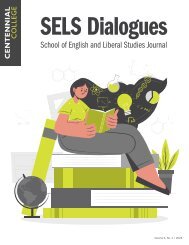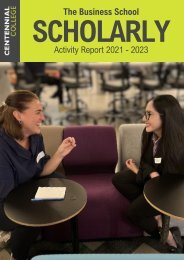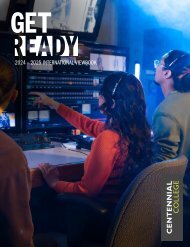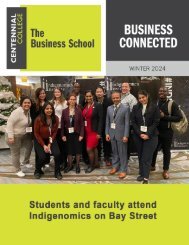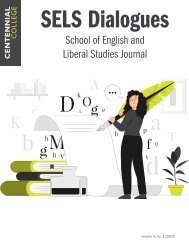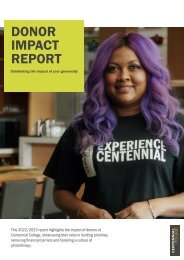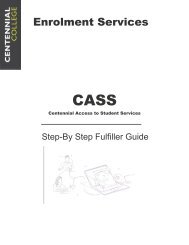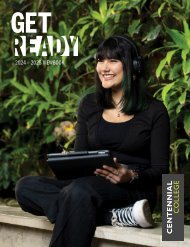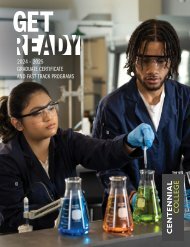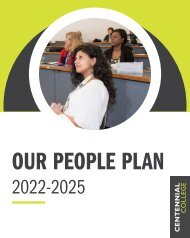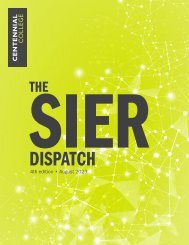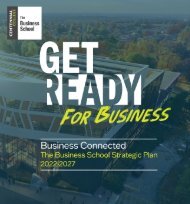The Teaching and Learning Innovation Digest - May 2023
Welcome to a truly special edition of the Teaching and Learning Innovation Digest! Our seventh annual academic publication has assumed an incredibly meaningful shape and form for a number of reasons. Not only did we receive an enthusiastic response with over 30 submissions via our institutional broadcast, but we also have consciously and intentionally embraced the principles of Universal Design for Learning by attempting to represent and celebrate the varied forms of expressions therein. From reflective essays, poetry, visual and performing arts, podcasts, video conversations to scholarly work, academic and applied research, news and updates, and interviews, this is truly a power-packed publication!
Welcome to a truly special edition of the Teaching and Learning Innovation Digest! Our seventh annual academic publication has assumed an incredibly meaningful shape and form for a number of reasons. Not only did we receive an enthusiastic response with over 30 submissions via our institutional broadcast, but we also have consciously and intentionally embraced the principles of Universal Design for Learning by attempting to represent and celebrate the varied forms of expressions therein. From reflective essays, poetry, visual and performing arts, podcasts, video conversations to scholarly work, academic and applied research, news and updates, and interviews, this is truly a power-packed publication!
Create successful ePaper yourself
Turn your PDF publications into a flip-book with our unique Google optimized e-Paper software.
as well as teachers. When discussing math<br />
concepts, students have the opportunity to<br />
compare their ideas <strong>and</strong> teachers have the<br />
chance to provide on-the-spot feedback<br />
<strong>and</strong> check students’ underst<strong>and</strong>ing. In fact,<br />
discourse <strong>and</strong> instant feedback from teachers<br />
contribute to higher student achievement<br />
(Ing et al., 2015, as cited in Stockero et al.,<br />
2020). Furthermore, mathematical discourse<br />
is so important that it has been incorporated<br />
into three of the six St<strong>and</strong>ards of the National<br />
Council of Teachers of Mathematics (NCTM)<br />
released in 1991.<br />
What does this mean for teachers? How can<br />
mathematical discourse be promoted in<br />
current classrooms to re-engage students?<br />
Mathematical discourse can be promoted<br />
through open-ended tasks that are relevant to<br />
the learning material. <strong>The</strong> educator implements<br />
the task, facilitates the discussion environment,<br />
freeing them to check for underst<strong>and</strong>ing <strong>and</strong><br />
provide feedback.<br />
At the same time, there is a role for<br />
students. <strong>The</strong>y become responsible to<br />
engage in the discourse to deepen their<br />
own underst<strong>and</strong>ing <strong>and</strong> by doing so, they<br />
re-engage with instructors less as recipients<br />
of instruction <strong>and</strong> more as collaborators in<br />
learning. Mathematical discourse is not led by<br />
teachers, it’s led by students based on their<br />
own needs (Hufferd-Ackles et al., 2004).<br />
In an online learning platform, teachers<br />
cannot interact with every student to check<br />
for their underst<strong>and</strong>ing, resulting in the<br />
advancement in technology to compensate<br />
for this disadvantage. As an example, the<br />
number of websites containing mathematical<br />
problems is increasing. <strong>The</strong>se websites<br />
can generate questions for students to<br />
solve as well as marking <strong>and</strong> showing the<br />
correct solutions. In online learning, this<br />
task is very much solitary. However when<br />
implemented in an in-person setting where<br />
students are encouraged to work with each<br />
other, the task can be used to promote<br />
discourse among students to support <strong>and</strong><br />
share ideas. Returning to campus does not<br />
mean ab<strong>and</strong>oning everything that is not inperson.<br />
<strong>The</strong> advancements made in technology<br />
can be used in class as an additional method<br />
to support discourse.<br />
In summary, as a way to re-engage<br />
students when returning to campus,<br />
mathematical discourse is a beneficial<br />
tool that furthers student learning. It can<br />
provide opportunities for students to deepen<br />
their underst<strong>and</strong>ing, share in collaboration<br />
with peers, <strong>and</strong> allow teachers to check<br />
students’ underst<strong>and</strong>ing <strong>and</strong> provide timely<br />
feedback. Mathematical discourse re-thinks<br />
learning from a one-directional lecture<br />
by the teacher to an environment that<br />
encourages student participation through<br />
purposeful discussion.<br />
References<br />
Gresham, G., <strong>and</strong> Shannon, T. (2017). Building mathematics discourse in students. <strong>Teaching</strong> Children<br />
Mathematics, 23(6), 360–366. https://doi.org/10.5951/teacchilmath.23.6.0360<br />
Hufferd-Ackles, K., Fuson, K. C., <strong>and</strong> Sherin, M. G. (2004). Describing levels <strong>and</strong> components of a<br />
math-talk learning community. Journal for Research in Mathematics Education, 35(2), 81–116.<br />
https://doi.org/10.2307/30034933<br />
Moschkovich, J. (2003). What counts as mathematical discourse, 325–332.<br />
https://doi.org/https://eric.ed.gov/?id=ED501034<br />
NCTM. (1991). Professional st<strong>and</strong>ards for teaching mathematics. National Council of Teachers of<br />
Mathematics.<br />
Stockero, S. L., Van Zoest, L. R., Freeburn, B., Peterson, B. E., <strong>and</strong> Leatham, K. R. (2020). Teachers’<br />
responses to instances of student mathematical thinking with varied potential to support student<br />
learning. Mathematics Education Research Journal, 34(1), 165–187.<br />
https://doi.org/10.1007/s13394-020-00334-x<br />
Dr. Richard Williamson<br />
Lead Facilitator <strong>and</strong> Faculty<br />
Tongyu Zhang<br />
Student<br />
62<br />
63



